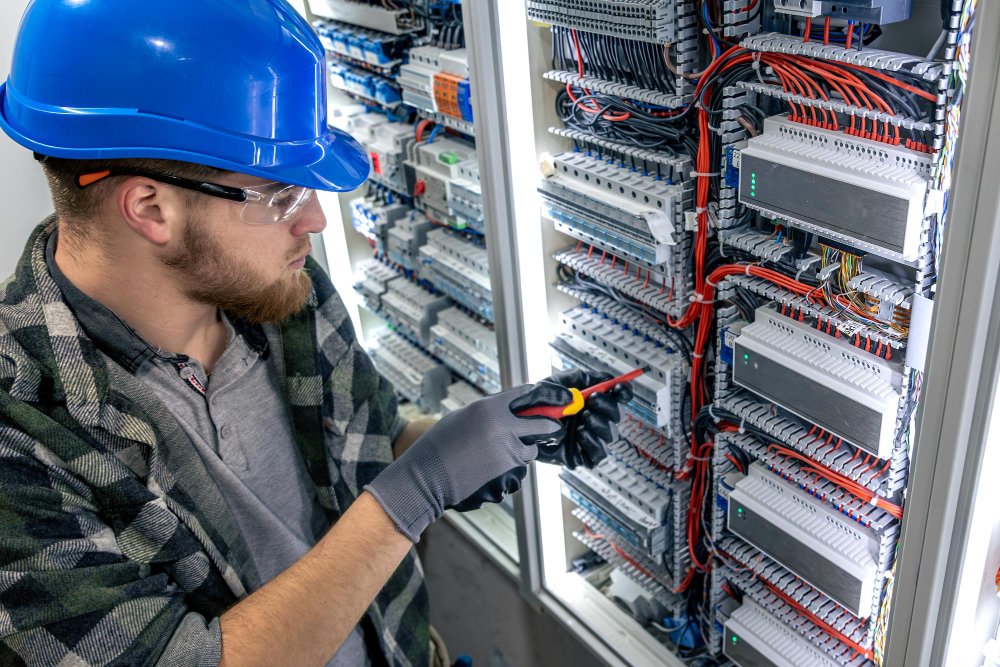
Every business relies on fast, dependable network connectivity. From file sharing to video conferencing, your cabling system determines how efficiently your network performs. While newer technologies like CAT-6A and fiber optics are gaining popularity, many businesses still wonder if CAT-6 cabling remains a practical and future-ready choice.
At Prime Data Cabling Services, we often help Toronto and GTA businesses evaluate their options when upgrading network infrastructure. The right choice depends on your current needs, future growth plans, and budget. This guide explains when CAT-6 cabling is still the ideal option for your business network and how to make the best long-term decision.
Understanding CAT-6 Cabling in Today’s Business Networks
CAT-6 cabling has been a trusted standard for more than a decade. Known for its high performance, it supports gigabit and even 10-gigabit speeds under the right conditions. For many small and mid-sized businesses, this level of performance is more than enough for everyday operations.
What makes CAT-6 a reliable choice
CAT-6 cables are designed to minimize interference and crosstalk, which ensures a clean and consistent data signal. They are ideal for connecting computers, servers, access points, and VoIP systems in offices or commercial spaces.
Key advantages of CAT-6 cabling include:
- Consistent gigabit performance over typical office distances
- Cost-effective installation compared to CAT-6A or fiber
- Compatibility with most existing hardware and networking equipment
CAT-6 cabling continues to be a smart investment for businesses that require strong and stable connectivity without the added cost of enterprise-grade systems.
CAT-6 vs. CAT-6A vs. Fiber: What’s the Real Difference?
When comparing cat6 vs cat6a vs fiber network cabling types, it’s important to understand how each performs under different conditions.
· Performance comparison
CAT-6 supports speeds up to 10 Gbps at distances up to 55 meters. CAT-6A, its enhanced version, maintains 10 Gbps up to 100 meters and offers better shielding against interference. Fiber optic cabling provides even greater speeds and bandwidth, often used for large data centers or enterprise-grade systems.
· Installation and cost considerations
CAT-6 cabling is more affordable to install and maintain. It uses copper wiring and standard connectors, making it a practical choice for small and medium offices. CAT-6A and fiber require specialized installation and materials, increasing overall project costs.
· Scalability and future potential
While fiber optics deliver unmatched speed, most business networks today do not use their full potential. CAT-6 provides a balance between performance, cost, and scalability for typical office needs.
When Does CAT-6 Still Make Sense for Your Business?
CAT-6 cabling remains an excellent choice in many real-world business environments, especially where gigabit speed is sufficient.
· Small and medium-sized offices
If your office primarily handles email, web browsing, and standard cloud-based applications, CAT-6 offers more than enough bandwidth. It supports fast data transfer and smooth collaboration tools like Zoom or Microsoft Teams.
· Budget-friendly performance
For businesses balancing cost and performance, CAT-6 provides strong value. It is affordable to install, easy to maintain, and offers reliable performance for most commercial applications.
· Upgrading from older systems
Offices still using CAT-5e or older cabling can see significant improvements by upgrading to CAT-6. The jump in data transfer speed and signal clarity enhances efficiency without requiring a complete infrastructure overhaul.
In many cases, CAT-6 meets all operational needs while leaving room for moderate network growth.
When Should You Consider Upgrading Beyond CAT-6?
Although CAT-6 remains reliable, there are situations where higher-performance cabling is more suitable.
· High-bandwidth requirements
If your business relies heavily on cloud storage, large data transfers, or high-definition video conferencing, CAT-6A or fiber may be worth considering. These systems handle heavier traffic loads without latency or signal loss.
· Preparing for future technologies
Companies planning long-term expansion or adopting technologies like 8K video, smart office automation, or IoT devices may benefit from higher-grade cabling to avoid future replacements.
· Large-scale facilities
For large buildings or multi-floor environments, CAT-6A provides better consistency over long distances, while fiber is preferred for connecting server rooms or separate buildings.
Upgrading from CAT-5e: Why CAT-6 Is Still a Major Step Forward
Many small businesses still operate on CAT-5e cabling, which supports gigabit speed but struggles under modern network loads. Upgrading to CAT-6 brings noticeable improvements in both speed and reliability.
· Improved shielding and signal quality
CAT-6 cables feature better insulation, reducing crosstalk and signal degradation. This means fewer interruptions during video calls and faster file transfers.
· Future compatibility
CAT-6 is compatible with modern switches, routers, and access points, allowing businesses to transition smoothly without replacing existing hardware.
· Cost-effective modernization
Upgrading from CAT-5e to CAT-6 is a relatively simple and affordable way to modernize your network while preparing for future demands.
For most businesses, this step offers the best return on investment without overspending on fiber solutions.
CAT-6 Installation Best Practices for Reliable Performance
Proper installation is critical to getting the full performance benefits from CAT-6 cabling.
· Planning and organization
Before installation, a professional assessment identifies the most efficient routes for running cables. This prevents unnecessary bends or long runs that could weaken signals.
· Labeling and documentation
Clear labeling ensures every connection is traceable, making future maintenance and upgrades faster and more efficient.
· Testing and certification
Each cable should be tested for performance and compliance with industry standards. Certified installations, like those performed by Prime Data Cabling Services, guarantee optimal results and longevity.
Quick best practices checklist:
- Maintain proper cable separation from electrical wiring
- Avoid sharp bends or kinks during installation
- Use quality connectors and components
- Keep all cables organized in labeled pathways
Following these standards ensures your CAT-6 installation operates at peak performance for years.
Making Future-Proof Cabling Decisions
When planning your office network upgrade, it’s important to strike a balance between current requirements and future growth.
· Assess your real-world needs
Evaluate how your business uses the network daily. Do you handle massive data transfers, or are you primarily using cloud software and communications tools? This helps determine whether CAT-6 is sufficient or if an upgrade makes sense.
· Think long term
Cabling should last at least a decade, so consider where your company will be in five to ten years. If you expect rapid expansion or a move toward data-intensive applications, higher-grade cabling may offer better long-term value.
· Seek professional guidance
Working with experienced cabling experts ensures your network is designed with scalability and compliance in mind. Professionals can help analyze your current usage and recommend the best-fit solution for your budget and goals.
By making informed decisions, you create a network that’s both cost-effective and future-ready.
Conclusion
So, is CAT-6 cabling still good for business networks? The answer is yes—when implemented properly and used in the right environments. It remains a dependable, cost-effective choice for most small and medium businesses that value speed, reliability, and scalability.
Partnering with Prime Data Cabling Services ensures your network is built to professional standards and ready to handle the demands of today’s technology. Our certified team helps Toronto businesses make smart infrastructure choices that deliver performance and long-term value.
Contact Prime Data Cabling Services today to schedule a site evaluation or request a customized network upgrade plan. Serving Toronto and the GTA, we’re here to make your office network stronger, faster, and more reliable.
Frequently Asked Questions (FAQs)
How long will CAT-6 cabling remain relevant for business networks?
CAT-6 will remain a reliable standard for at least the next five to ten years, supporting most business applications efficiently.
Is upgrading from CAT-5e to CAT-6 worth the investment?
Yes, the speed, signal quality, and noise reduction improvements make it a worthwhile and affordable upgrade.
What is the difference between CAT-6 and CAT-6A?
CAT-6A supports longer distances and higher bandwidth, but it’s also thicker and more expensive to install.
Can CAT-6 support 10-gigabit Ethernet?
Yes, CAT-6 can handle 10 Gbps speeds up to 55 meters, making it ideal for most office layouts.
How do I know if my business should switch to fiber instead?
If your network handles massive data loads or spans multiple buildings, fiber may be better suited for your needs. Consult a professional to assess your specific requirements.

